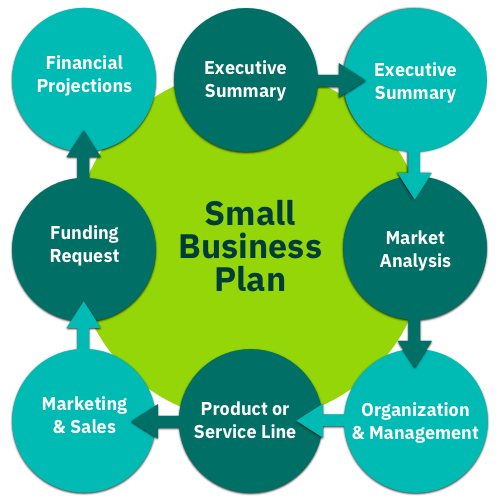In today’s hyper-competitive business world, success isn’t just about launching a product or service; it’s about launching the right product at the right time. That’s where market opportunity analysis comes in. Whether you’re a startup eyeing your first market or an established company looking to expand, this analysis can spell the difference between breakthrough success and lukewarm results.
What is Market Opportunity Analysis?

At its core, market opportunity analysis (MOA) identifies and evaluates the potential for a product or service within a specific market. It’s not just about spotting gaps but understanding whether those gaps represent viable growth opportunities.
Why is Market Opportunity Analysis Important?
Think about it: Would you build a house without checking if the foundation is strong? The same principle applies to entering a market. A thorough market opportunity analysis ensures you aren’t unthinkingly walking into an overcrowded, stagnant, or too niche market. It also gives businesses the insights they need to position themselves competitively and satisfy the needs of their target audience.
Key Elements of a Market Opportunity Analysis
Market Size
The size of the market indicates how big the opportunity is. This includes understanding the total number of potential customers and the overall revenue the market can generate. Knowing the market size helps businesses determine whether the opportunity is large enough to justify entry.
Customer Segmentation

Knowing your market is not enough; you also need to know your customers. Customer segmentation breaks down the market into different groups based on demographics, behaviours, or preferences. Each segment represents a unique opportunity with distinct needs that businesses can target.
Competitive Landscape
Who are your competitors, and how strong are they? This question is critical in market opportunity analysis. Evaluating the competitive landscape means identifying direct and indirect competitors, understanding their strengths and weaknesses, and spotting potential gaps where your product or service can stand out.
Market Trends and Growth Potential
Industries aren’t static; they evolve with consumer preferences, technological advancements, and economic factors. Analysing market trends ensures you’re not entering a market that’s on the decline. Growth potential is key — a vibrant, expanding market offers far more opportunity than one shrinking or plateauing.
Step-by-Step Guide to Conduct a Market Opportunity Analysis
Identify Your Target Market
The first step is identifying the audience interested in your product or service. This involves defining your ideal customer based on age, location, income, preferences, and purchasing behaviour. This clarity will allow you to tailor your offerings to meet their needs.
Assess the Market Demand

Once you know your target market, it’s time to measure demand. Is there a real need for your product, or are you assuming there is? Tools like Google Trends, surveys, and focus groups can help you gauge whether consumers are looking for your solution.
Evaluate the Competition
You can’t ignore the competition. Look at how many players are already serving your target market. How saturated is the space? Are there big players dominating, or are there many small players you can outcompete with a unique value proposition? Competitive research is crucial in understanding how to differentiate your brand.
Analyze Market Trends

Studying market trends allows you to forecast potential shifts in customer behavior, technology, and regulations. Are there innovations that could disrupt the market? Are consumer tastes changing? Understanding these trends ensures you remain agile and adaptable.
Tools and Techniques for Effective Analysis

Luckily, you’re not alone when conducting market opportunity analysis. A variety of tools and techniques can make your job easier. Platforms like Google Analytics, SEMrush, and Statista provide critical market data. SWOT analysis (Strengths, Weaknesses, Opportunities, Threats) is also useful for organizing your findings.
Common Challenges in Market Opportunity Analysis
Insufficient Data
In many cases, the data needed for thorough analysis isn’t readily available, or it’s incomplete. This can lead to faulty assumptions and poor decision-making. Businesses should invest in reliable data sources and analytics tools to avoid this pitfall.
Misinterpreting Market Signals

It’s easy to mistake a temporary trend for a long-term opportunity. Misinterpreting market signals can lead businesses to invest in a market that’s not sustainable. Staying informed with real-time data and expert insights helps mitigate this risk.
Real-World Examples of Successful Market Opportunity Analysis
Some of the most successful companies owe their growth to thorough market opportunity analysis. Take Uber, for instance. By identifying a gap in the traditional taxi industry and leveraging technology, they entered and disrupted the transportation market in a revolutionary way.
Another example is Netflix, which started as a DVD rental service but shifted its model based on changing market dynamics, eventually dominating the streaming industry.
How to Leverage Market Analysis for Business Success

Once you’ve gathered all your insights, it’s time to put them into action. Market opportunity analysis isn’t just about collecting data — it’s about using that data to shape your business decisions. Whether you’re entering a new market or developing a new product, these insights should guide your strategy.
Conclusion
In the market landscape, the businesses that thrive are the ones that understand the power of market opportunity analysis. It’s not just about spotting a gap in the market; it’s about determining whether that gap can turn into a profitable opportunity. Conducting a thorough analysis requires time, data, and strategic thinking, but the payoff can be tremendous. So before you take that leap into a new market, make sure you’ve done your homework — and then some.








